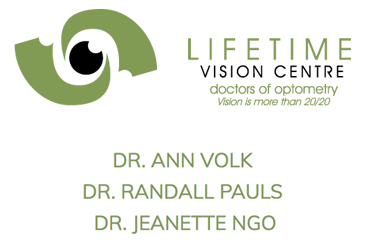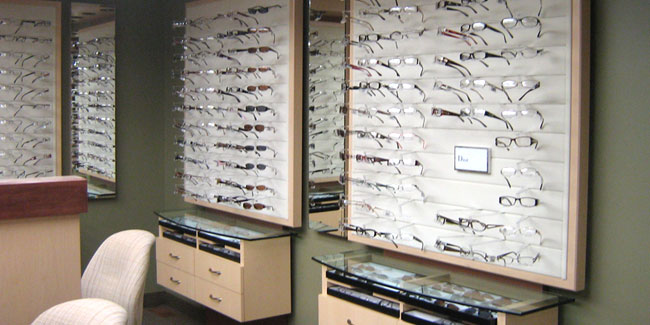High Quality Eye Care Services
The importance of a regular eye exam for adults
During your eye exam our doctors are not only evaluating your eyes for visual correction (if you need eye glasses or contact lenses), they are also checking the overall health and function of your eye.
Most eye diseases have very subtle symptoms and cannot be detected unless you have a comprehensive eye exam. It is important to catch eye diseases early as some diseases, like glaucoma, are not reversible, but they can be managed and vision loss prevented.
Examples of what the doctor looking for:
- Refractive Error: This refers to your prescription and is corrected with eye glasses, contact lenses or laser surgery.
- Strabismus: This has to do with the alignment of the eyes.
- Eye Diseases: These can be detected by looking at the eye’s blood vessels, retina and so forth. Diseases include Glaucoma, Cancer, Cataracts, macular degeneration and many others.
- Eye Problems like dry eyes or computer syndrome.
The importance of an eye exam for children and infants
Since many eye problems arise from conditions that can be identified by an eye doctor in an infant’s first year of life, a parent can give an infant a great gift by seeking an eye assessment in addition to the general wellness evaluation that is done by a pediatrician or family practice doctor.
Did you know?
- 80% of a child’s learning is based on vision.
- 1 in 5 children have a vision problem.
- 1 in 6 school-aged children experience learning difficulties which are a result of unknown or uncorrected vision conditions.
- One in 30 children will be affected by amblyopia — often referred to as lazy eye — a leading cause of vision loss in people younger than 45 years.
- One in 25 will develop strabismus — more commonly known as cross-eyes — a risk factor for amblyopia.
- One in 33 will show significant refractive error such as nearsightedness, farsightedness and astigmatism — irregularly shaped cornea.
- One in 100 will exhibit evidence of eye diseases such as glaucoma.
- Correction of Strabismus is most effective when diagnosed and treated before the age of 2.
- Motor skills among children 3-5 improved significantly after appropriate eyewear was prescribed and worn.
- Detecting and correcting vision problems in children could contribute to a reduction of illiteracy and drop-outs.
Source: BC Association of Optometry, Archives of Ophthalmology, allaboutvision.com an InfantSEE
How often should I get an eye exam?
Children: An assessment between six and 12 months of age is recommended to determine if an infant is at risk for eye or vision disorders. Their next examination should be at 3 years of age and yearly after that.
Adults: We recommended every 1-2 years depending on general health status, visual health status and family history.
Seniors: Over the age of 65 an annual eye exam is recommended.
What to expect during an eye exam?
Before you begin: You will undergo a series of tests that will be performed by an optometric assistant. These results provide vital information that the optometrist will use in determining the overall health of your eyes. A thorough case history will be taken to determine factors like hereditary eye diseases, eye injuries, diabetes and various medications that may influence your eye examination.
The examination
A standard examination takes about 30 minutes. Our doctors will take the power measurement of your eyes to determine if you require eyeglasses and what strength they should be. They will also determine how well your eyes work together as a team. Next they will examine the front of your eye, including the eyelids, cornea and your pupil reflexes.
In order to examine the interior of your eye for cataracts and other diseases the doctor will insert dilation drops – these take about 20 minutes to take effect. This procedure will not hurt, but you will notice that your near vision may become blurry as they take effect. Your eyes will also be light sensitive after this procedure, so make sure you bring a pair of sunglasses along for the trip home.
Choosing contact lenses
Contact lenses are medical devices which, like drugs, provide benefits while posing certain risks. Many people wear contact lenses to correct their vision. The reasons for choosing contacts over glasses or refractive eye surgery (which corrects the shape of the cornea) include lifestyle, sports and appearance.
With all of the convenient and healthy options available today almost anybody can wear contact lenses, including bifocal and progressive (no Line) eye glass wearers as well as those with astigmatism.
In order to use contact lenses safely you will require a contact lens examination, please ask our staff to set up this appointment for you.
Laser Surgery co-management
Most people with vision correction issues want to know more about LASIK and whether it is right for them, for more information please feel free to ask your optometrist.
Fitting and repairs
We have an on-site laboratory to assist with fitting and repairs to a wide range of spectacles. Ask our Optical Assistants for more information. Spectacle frames and selection: we have a wide range of frames for your selection, brands that we carry include: Silhouette, Burberry, BCBG, Adidas, Gucci, Dior.
Here are a few general guidelines on frame selection:
- Choose a frame in proportion to your face.
- Choose a frame that contrasts with your face shape i.e. if your face is round consider frames that have square angles.
- To lengthen your face: consider selecting mid to high temples, and frames with little or no colour on the bottom rim.
- To shorten your face: consider mid to low temples, and narrower frames
- To lengthen your nose: consider a high nose bridge that is clear or light coloured. Avoid solid colour bridges.
- To shorten your nose: consider a low nose bridge in a solid colour. Avoid clear nose bridges.
- To lengthen a wider nose: Use a clear or metal nose bridge that sits close to the nose, use nose pads.
- A small face: Use thin metals and lightweight frames.
- A larger face: Consider balancing your features with a slightly oversize frame.
Sunwear and UV Protection
Ultraviolet radiation reaches the eyes not only from the sky above but also by reflection from the ground, especially water, snow, sand and other bright surfaces. Protection from sunlight may be obtained by using both a brimmed hat or cap and UV absorbing eyewear.
Ultraviolet radiation may play a contributory role in the development of various ocular disorders including cataract, pterygium, ocular cancers, photokeratitis (flash burns) and corneal degenerative changes. It may contribute to age-related macular degeneration.
UV Protection — A Must for Children
- The average child receives three times the annual UV exposure of an adult
- 7.5 times greater UVR transmission through the lens inside a child’s eye
- 75% transmission at age 10, 10% at age 30
- Damage from UVR is cumulative
As your eye care professional we consider UV protected sunglasses to be an integral part of your eye care needs.

